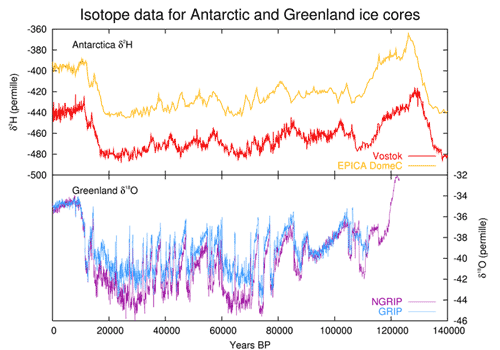We begin our discussion of climate change by considering the concept of planetary boundaries. The planetary boundary concept is a new one, originating in research released in 2009, but it is based on some classic concepts, in particular resilience at the global scale. In short, a planetary boundary is a limit to how much the Earth system can be disturbed without sending Earth into a new, unsafe state.
Video Assignment: Planetary Boundaries
The planetary boundary concept was introduced in 2009 by a group of international researchers led by Johan Rockström of the Stockholm Resilience Centre.
As you watch the video please think about the following questions:
- What is the Holocene, and why does it matter to development/civilization?
- Note that the Holocene began about 12,000 years ago. Why is this time significant?
- What is the boundary for climate change?
- So, humanity is pulling nitrogen from the atmosphere and converting it to other forms. How are we doing this? With what process? Why are we doing this?
- Are the boundaries isolated issues or are they interrelated?
Details of the research project can be found at the Stockholm Resilience Centre website(link is external). Pay particular attention to recent updates(link is external) to the Planetary Boundaries model.
As discussed in the video, the Holocene is the most recent epoch of Earth’s history. For the last 12,000 years or so, conditions on Earth have been relatively stable. This can be seen in data from ice cores in Antarctica and Greenland:

Note that in this graph, time proceeds to the left, meaning that today is at the left edge of the graph and points further to the right are further into the past. The graph shows concentrations of isotopes of hydrogen and oxygen at different times. Ice sheets build gradually over time; the chemical composition of a layer of the ice depends on the chemical composition of Earth’s atmosphere at the time. An ice core is a long cylinder that we remove from the ice sheet, giving us a sample of information about Earth’s atmosphere over long times. Ice cores are valuable sources of information about Earth’s history, which helps us understand how the Earth system works and, in turn, what Earth may be like in the future.
The important point to understand from the ice core graph is that the last 12,000 years or so have been relatively stable on Earth. It is during this period of stability that human civilization emerged. No one knows for sure whether civilization would have emerged without this period of stability, but we have strong reason to believe that the stability played an important role. Stable conditions made developing agriculture much easier since our ancestors could breed plants customized for stable local growing conditions. This may explain why – as we saw in Module 5 – agriculture emerged in several parts of the world within the last 12,000 years, but had not emerged anywhere else prior to then. For those of you interested in religion and its history, you might even ask whether it is a coincidence that in the Judeo-Christian tradition, the world (and everything else) was created about 6,000 years ago… and that this tradition originated in the Fertile Crescent.
So, what does this all have to do with climate change? Simply put, climate change threatens to cross a planetary boundary, to put the Earth system into a new state, a state different from that in which civilization emerged. Our civilization remains highly customized to Holocene Earth. Climate change may force us to make major adaptations. At this time, it is uncertain whether civilization can survive climate change intact.
Intellectually, we’re going to need a lot of resources to understand climate change and what to do about it. That’s what the rest of this module is about.

